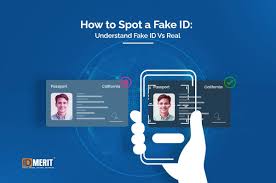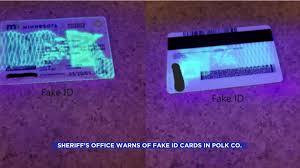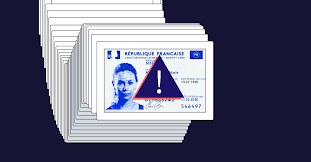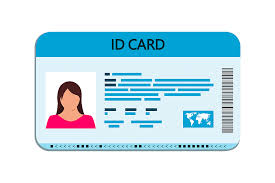Fake ID Card Entertainment
The entertainment industry behind fake IDs: a game hidden in the dark
In modern society, fake IDs exist not only for illegal activities, but also become a new type of "entertainment" that young people flock to in some entertainment venues. From simulating identities to creating new ways of socializing, the widespread use of fake IDs has subtly influenced consumer behavior and the operation of entertainment venues. This article will explore the role of fake IDs in the entertainment industry and the hidden stories behind them.
1. The origin and development of fake IDs
1.1 Historical background of fake IDs
The history of fake IDs can be traced back to the early 20th century. The original fake IDs were mostly used to evade legal responsibility. In some countries, teenagers entered bars and nightclubs by forging IDs, which aroused widespread social concern. With the development of technology, the production of fake IDs has become more advanced. The production process is no longer the rough manual operation at the beginning, but uses high-tech equipment for refined printing.
1.2 Current production and circulation of fake IDs
Today, there are many ways to make fake IDs, and the common ones are manual forgery and computer printing. The production team is usually composed of some young people who are not well-versed in the world, small vendors, and specialized criminal gangs. The rise of the Internet has made the circulation of fake ID cards more convenient. Many "black market" platforms allow users to buy ** anonymously, making the supervision of relevant laws difficult.
2. The role of fake ID cards in entertainment venues
2.1 Attracting young customers
The business of many entertainment venues depends on the spending power of young people, and fake ID cards have become the "pass" for these young people to enter entertainment venues. Whether it is a bar, KTV, or e-sports hall, the widespread use of fake ID cards has greatly increased the turnover of these venues. After realizing the potential of this consumer group, many businesses have begun to launch promotional activities for teenagers to attract more "young customers" with goodwill.
2.2 A new way of social activities
Fake ID cards have also become part of many young people's social activities. By using fake ID cards, they can enjoy nightlife with friends and experience the world of adults. In this culture, fake ID cards are not only a symbol of identity, but also a sign of "adulthood", which gives young people a false sense of superiority among their peers.
3. Potential risks of fake ID cards
3.1 Legal risks
Although fake ID cards provide convenience for young people in some aspects, the legal risks behind them should not be underestimated. Possessing and using fake ID cards are both illegal acts. Once they are seized, young people will face serious legal consequences. In addition, some entertainment venues have also been punished for the identity issues of customers, which directly affects the reputation and operation of merchants.
3.2 Social and psychological issues
The use of fake ID cards not only affects young people's legal awareness, but may also lead to distortions in their values. Relying on fake identities to gain a short-term sense of vanity makes some young people feel confused when facing the problem of their real identity. They may compare with their friends and think that they can only "integrate" into society through fake ID cards. This psychological problem urgently needs to be paid attention to and solved.
4. How to deal with the phenomenon of fake ID cards
4.1 Social education and publicity
In order to solve the problem of the proliferation of fake ID cards, the first thing to do is to strengthen the legal awareness education of young people. Schools and families should jointly assume responsibility and let young people understand the risks and harms of fake ID cards through lectures, publicity activities, etc., and cultivate their correct values.
4.2 Supervision of bars and entertainment venues
As an important "hotbed" for fake ID cards, entertainment venues need to strengthen the review of customer identities. Merchants can use high-tech means, such as facial recognition technology, to better identify identities and reduce the use of fake ID cards from the source. In addition, the training of in-store staff is also a link to improve their ability to identify suspicious ID cards.
4.3 Community support and participation
The community is also a link in dealing with the problem of fake ID cards. By organizing healthy entertainment activities, such as youth gatherings and cultural performances, young people's high demand for entertainment venues can be dispersed, allowing them to find more active lifestyles, thereby reducing their dependence on fake ID cards.
V. Conclusion
Fake ID cards play a complex role in the modern entertainment industry. The convenience and risks they bring coexist, leading to the emergence of multiple problems such as legal, social and psychological. Only through the joint efforts of all aspects of society can this problem be effectively solved so that young people can grow up in a safe and healthy environment. We look forward to seeing a more rational and mature entertainment culture in the future, so that everyone can enjoy the fun of life with their true identity.
 Scannable Fake ID Card
Scannable Fake ID Card
 Buy Scannable Fake ID Card
Buy Scannable Fake ID Card
 Scannable Fake Driver License
Scannable Fake Driver License
 Fake Canadian Driving License
Fake Canadian Driving License
 Fake Canadian ID Card
Fake Canadian ID Card
 Legal ID Card
Legal ID Card
 ID Card
ID Card
 Custom ID Card
Custom ID Card
